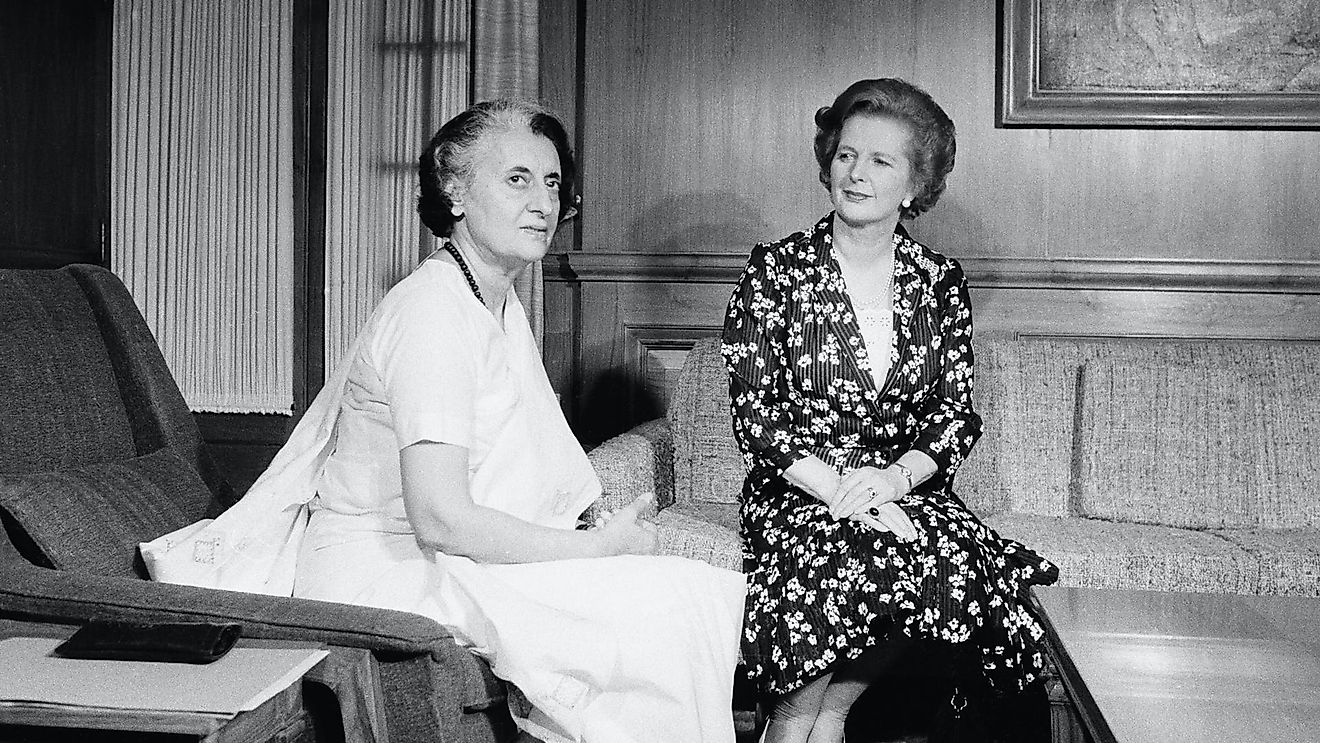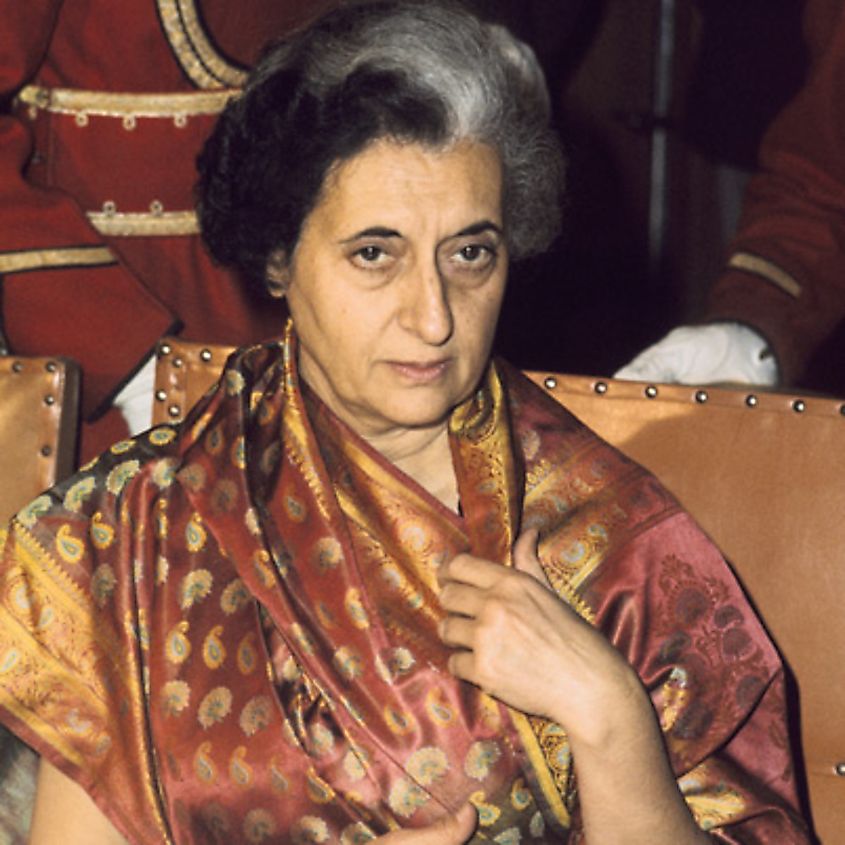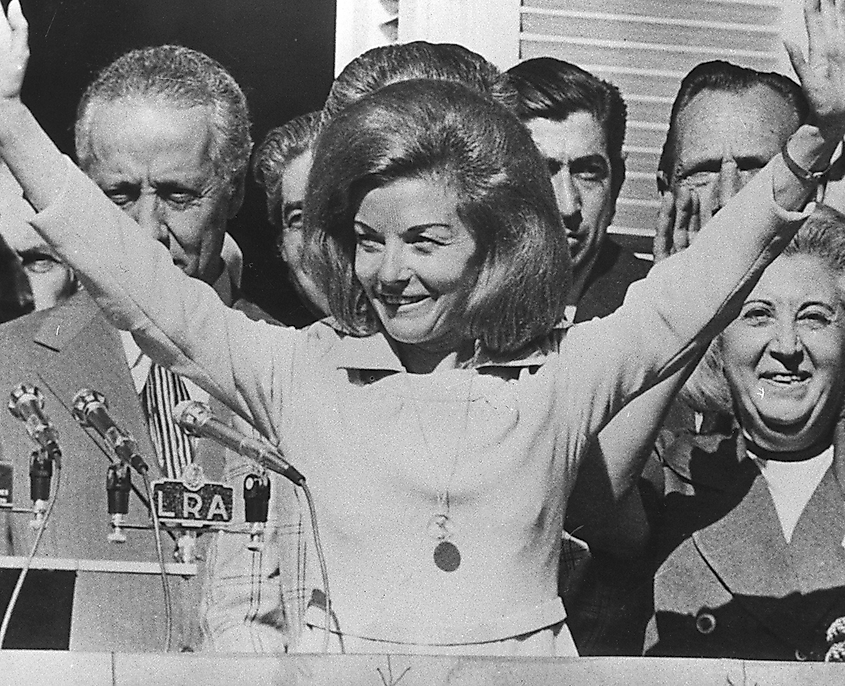Which Countries Were First To Elect Women Leaders?

- Out of 195 nations in the world, only 70 have had female leaders.
- Sirimavo Bandaranaike became the world’s first female Prime Minister in 1960.
- 5 of the world's most populous countries, including the United States, have never elected a woman leader.
Women have always had to battle sexism and other forms of gender discrimination. From the suffragettes to the #MeToo movement, those brave enough to stand up to oppression have led the way for women’s rights, but much is still needed for the world to see true gender equality. Recent estimates show that only about 35% of countries have women as heads of their governments, even though they make up almost 50% of the world’s population.
Here are the incredible women first elected as heads of their countries. From presidents to prime ministers and chancellors, these remarkable ladies paved the way for girls everywhere.
1. Sri Lanka - Sirimavo Bandaranaike (1960 -1965, 1970-1977)

Sirimavo Bandaranaike became the world’s first female Prime Minister in 1960. She began her political career the previous year following the assassination of her husband who was prime minister at the time. Sirimavo was elected head of state of Ceylon, modern-day Sri Lanka, from 1960 until 1965, and again from 1970 to 1977. Her government was notable for its socio-economical advancement; establishing a state-run system and nationalizing many businesses. Her daughter, Chandrika Kumaratunga, continued her mother’s legacy as a prime minister and later on as Sri Lanka’s first woman president.
2. India – Indira Gandhi (1966-1977, 1980-1984)

Born into a political family, Indira Gandhi was the only child of India’s first elected prime minister. She attended a Swiss boarding school, and later, Oxford University, before launching her political career. She rose to prominence quickly, becoming the first female prime minister of India in 1966 and serving three consecutive terms. She was a vocal supporter of East Pakistan’s (present-day Bangladesh) independence and became the first leader to recognize it as a country. She revitalized the farming industry, nationalized the country’s banks, and led India into the nuclear age. Back as prime minister in 1980, she was assassinated four years later by two of her own bodyguards.
3. Israel- Golda Meir (1969 – 1974)

Golda Meir was born in Ukraine and raised in Milwaukee, Wisconsin. She immigrated to Israel in 1921, when the country was called British Palestine. During World War II, Meir was a leading spokesperson for the Zionist cause, and later helped establish the state of Israel, signing their declaration of independence in 1948. She was elected prime minister in 1969 and led her country during the Yom Kippur War. She resigned in 1974 and passed away four years later from lymphoma.
4. Argentina - Isabel Martinez de Peron (1974-1976)

Majoritas.com
Isabel Martinez de Peron was the world’s first female president and served as Argentina’s president from 1974 to 1976. Already on the brink of anarchy, her country’s economic and political situations continued to deteriorate. She was seized by air forces and held under house arrest for five years.
5. Central African Republic - Elisabeth Domitien (1975-1976)
Born in 1925, Elisabeth Domitien was active in politics from an early age. In 1972 she was appointed prime minister of the Central African Republic, by the former president Bokassa. A year later, however, she was dismissed from her position a year later, because of her opposition to his proposed monarchy. In 1979 she staged a coup against him and was briefly imprisoned.
6. Portugual - Maria da Lourdes Pintasilgo (1979-1980)
The first, and only, female prime minister of Portugal, Maria da Lourdes Pintasilgo only held office for three months. During this short time, she was still able to reform social security and improve health care and education systems.
7. Bolivia - Lidia Gueiler Tejada (1979-1980)
Lidia Gueiler Tejada was Bolivia’s first female president. She was sworn in 1979 as an interim president and served an eight-month term. After a coup d’état, she continued to work in politics as an ambassador to Columbia and Venezuela.
8. Dominica - Dame Eugenia Charles (1980-1995)

Credit: Image by One News Box
The granddaughter of slaves, Eugenia Charles’ was not only the female first prime minister of Dominica, but she was also the country’s first female lawyer and the first woman elected as head of state in the whole of the Caribbean. Known as the “Iron Lady of the Caribbean” Charles fought tirelessly again government corruption. In 1991 she received the title of Dame Commander of the British Empire.
9. United Kingdom - Margaret Thatcher (1979 – 1990)

Margaret Thatcher came from a humble background and worked as an industrial chemist before launching into politics. She joined the Conservative Party and became its leader in 1975. By 1979, she was the United Kingdom’s first female prime minister. Thatcher was also the first woman elected to lead a major Western country. Nicknamed the “Iron Lady” for her hard stance against communism, she held office for 11 years, making her the longest-serving British prime minister of the 20th century. During her run, Thatcher promoted free-market policies, privatized state-owned companies, and helped lead Britain towards a better economic future.
10. Iceland - Vigdís Finnbogadóttir (1980-1996)

Vigdís Finnbogadóttir became Europe’s first female president in 1980. Despite being a divorced, single mother, she became an iconic political figure and the first woman to be elected head of state in a national election. A staunch advocate for Iceland’s cultural heritage, Finnbogadóttir was immensely popular and was re-elected three times until finally retiring in 1996 after an astonishing 16-year tenure.











